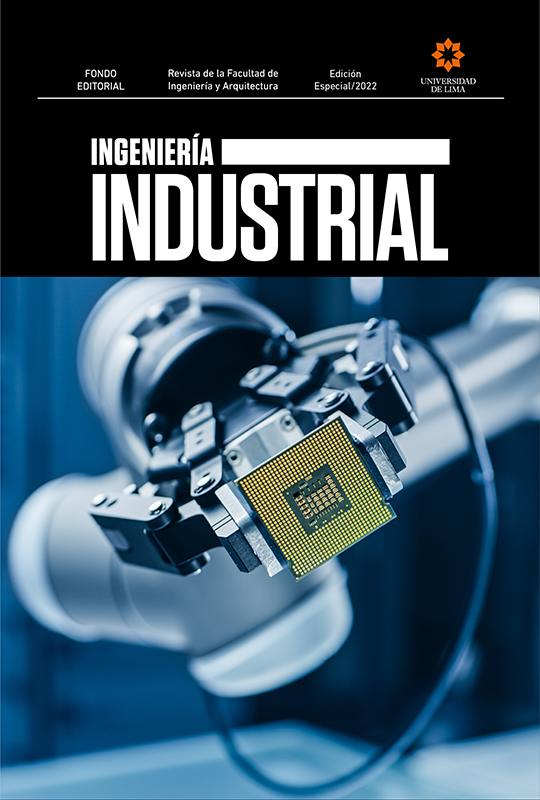Counting granules with u-net networks and connected components
DOI:
https://doi.org/10.26439/ing.ind2022.n.5804Keywords:
artificial intelligence, computer vision, neural networks, automationAbstract
This research develops a methodology to automate the process of counting the number of granules that remains in a toilet after being flushed (ASME A112.19.2-2018/CSA B45.1-18). This work integrates a U-Net convolutional network with a variation of the connected component algorithm. The training set consisted of 3678 images. Results show an accuracy above 98% between 0 and 180 granules. The methodology has been implemented in the production line.
Downloads
References
Alam, M., & Islam, M. (2019). Machine learning approach of automatic identification and counting of blood cells. Healthcare Technology Letters, 6(4), 103-108. DOI: 10.1049/htl.2018.5098
Bradski, G. (2000). The OpenCV Library. Journal of Software Tools, 25, 120-125.
Dobrescu, A., Giuffrida, M., & Tsaftaris A. (2019). Understanding deep neural networks for regression in leaf counting. En IEEE/CVF Conference on Computer Vision and Pattern Recognition Workshops (CVPRW) (pp. 2600-2608). DOI: 10.1109/CVPRW.2019.00316
Fukushima, K. (1980). Neocognitron: a self-organizing neural network model for a mechanism of pattern recognition unaffected by shift in position. Biological Cybernetics, 36(4), 193-202. https://doi.org/10.1007/BF00344251
Hough, P. (1962). Method and means for recognizing complex patterns (US Patent 3, 069,654, Ser. N.o 17,7156 Claims).
Ilyas, N., Shahzad, A., & Kim, K. (2020). Convolutional-neural network-based image crowd counting: review, categorization, analysis, and performance evaluation. Sensors, 20(1). https://doi.org/10.3390/s20010043
Ronneberger, O., Fischer, P., & Brox, T. (2015). U-Net: convolutional networks for biomedical image segmentation. https://arxiv.org/abs/1505.04597
Shamsaldin, A., Fattahb, P., Rashid, T., & Al-Salihi, N. (2019). A study of the convolutional neural networks applications. UKH Journal of Science and Engineering, 3(2), 31-40. https://doi.org/10.25079/ukhjse.v3n2y2019.pp31-40
Wu, J., Yang, G., Yang, X., Xu, B., Han, L., & Zhu, Y. (2019). Automatic counting of in situ rice seedlings from UAV images based on a deep fully convolutional neural network. Remote Sensing, 11(6), 691. https://doi.org/10.3390/rs11060691
Yong, H., Hong, Z., Yangyang, F., Shuaisheng, J., & Jianjian, W. (2019). Application of deep learning in integrated pest management: a real-time system for detection and diagnosis of oilseed rape pests. Mobile Information Systems, 2019, Artículo 4570808. https://doi.org/10.1155/2019/4570808
Zhao, M., Zhang, J., Zhang, C., & Zhang, W. (2018). Towards locally consistent object counting with constrained multi-stage convolutional neural networks. En Asian Conference on Computer Vision (pp. 247-261). Springer. https://doi.org/10.1007/978-3-030-20876-9_16



